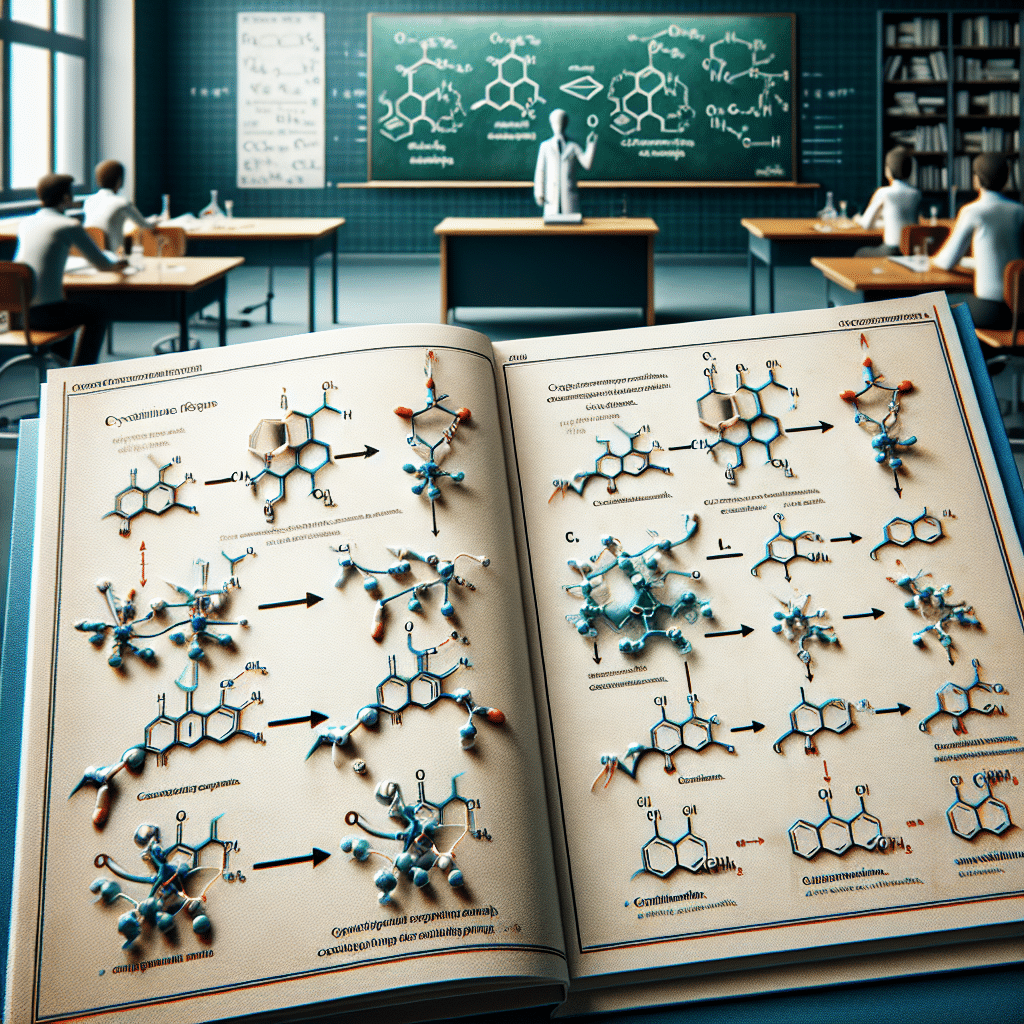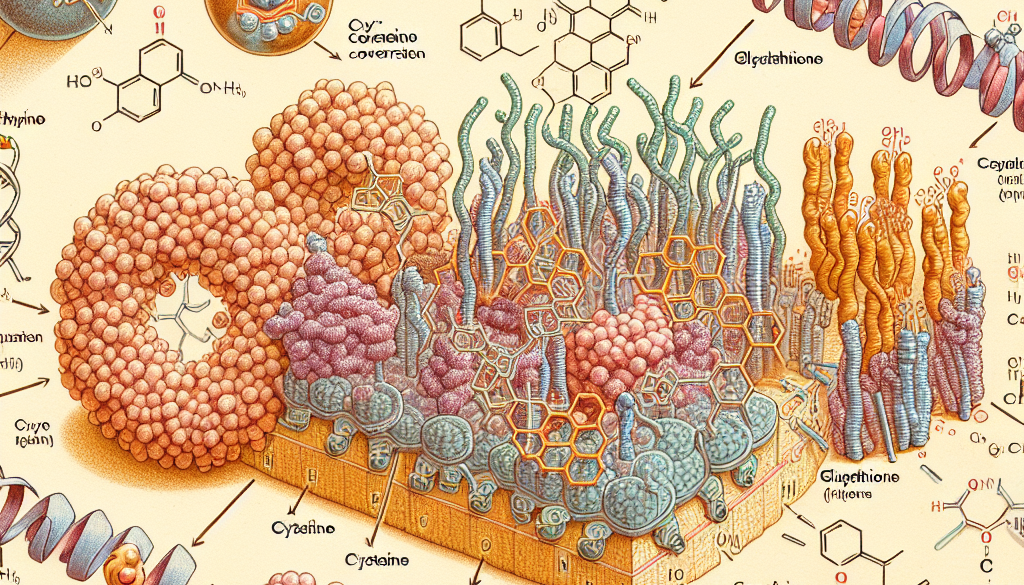Cysteine Conversion to Glutathione: Process
-
Table of Contents
- Unlocking the Power of Glutathione: The Cysteine Conversion Process
- The Significance of Glutathione in Human Health
- The Biochemical Pathway of Cysteine to Glutathione
- Step 1: Formation of Gamma-Glutamylcysteine
- Step 2: Synthesis of Glutathione
- Factors Influencing Cysteine Availability and Glutathione Synthesis
- Enhancing Glutathione Levels: Dietary and Supplemental Strategies
- Case Studies and Research on Glutathione Enhancement
- Conclusion: The Vital Role of Cysteine in Glutathione Synthesis
- Discover ETprotein’s High-Quality Protein Products
Unlocking the Power of Glutathione: The Cysteine Conversion Process

Glutathione, often referred to as the master antioxidant, is a critical molecule in maintaining oxidative balance and overall health. Its role in detoxification, immune function, and the prevention of cellular damage is well-documented. Central to the synthesis of glutathione is the amino acid cysteine. Understanding the conversion of cysteine to glutathione is not only of scientific interest but also has significant implications for health and disease management. This article delves into the biochemical pathway that transforms cysteine into the powerhouse that is glutathione.
The Significance of Glutathione in Human Health
Before we explore the conversion process, it’s essential to understand why glutathione is so vital. Glutathione is a tripeptide composed of three amino acids: cysteine, glutamate, and glycine. It is found in virtually every cell of the human body and serves several critical functions:
- Neutralizing free radicals and reactive oxygen species (ROS)
- Regenerating vitamins C and E to their active forms
- Supporting the immune system
- Facilitating the detoxification of harmful substances
- Regulating cell proliferation and apoptosis
Given its wide-ranging benefits, maintaining optimal glutathione levels is crucial for health and longevity.
The Biochemical Pathway of Cysteine to Glutathione
The synthesis of glutathione from cysteine occurs through a two-step enzymatic process known as the gamma-glutamyl cycle. This process takes place within the cells, particularly in the liver, which is the primary site for glutathione synthesis.
Step 1: Formation of Gamma-Glutamylcysteine
The first step involves the enzyme glutamate-cysteine ligase (GCL), which catalyzes the formation of gamma-glutamylcysteine from cysteine and glutamate. This reaction is ATP-dependent and is the rate-limiting step in glutathione synthesis. Factors such as oxidative stress, availability of substrates, and cellular demand for glutathione can regulate GCL activity.
Step 2: Synthesis of Glutathione
In the second step, the enzyme glutathione synthetase adds glycine to the gamma-glutamylcysteine molecule to form glutathione. This reaction also requires ATP and is relatively straightforward compared to the first step.
Factors Influencing Cysteine Availability and Glutathione Synthesis
The availability of cysteine is a critical factor in glutathione synthesis. Several factors can influence cysteine levels in the body:
- Dietary intake of cysteine-rich foods or its precursor, methionine
- Metabolism of methionine through the transsulfuration pathway
- Cellular uptake of cysteine or cystine (the oxidized dimer form of cysteine)
- Recycling of glutathione to liberate free cysteine
Additionally, conditions such as oxidative stress, illness, and aging can increase the demand for glutathione, thereby influencing the rate of its synthesis.
Enhancing Glutathione Levels: Dietary and Supplemental Strategies
Given the importance of glutathione, there is considerable interest in strategies to boost its levels in the body. These include:
- Consuming foods rich in sulfur-containing amino acids, such as whey protein, garlic, onions, and cruciferous vegetables
- Supplementing with precursors like N-acetylcysteine (NAC), which is a stable form of cysteine
- Direct supplementation with glutathione, although its effectiveness is debated due to breakdown in the digestive system
- Supporting cofactors such as selenium, which is necessary for the activity of glutathione peroxidase, an enzyme that uses glutathione to reduce peroxides
Case Studies and Research on Glutathione Enhancement
Research has shown that certain interventions can effectively increase glutathione levels. For example, a study on N-acetylcysteine supplementation demonstrated an increase in plasma glutathione in HIV-positive patients, which was associated with improved immune function. Similarly, selenium supplementation has been shown to boost glutathione peroxidase activity and enhance antioxidant defenses.
Conclusion: The Vital Role of Cysteine in Glutathione Synthesis
In summary, the conversion of cysteine to glutathione is a fundamental process that sustains the body’s antioxidant defenses and detoxification capabilities. Understanding this pathway provides insights into how we can support our health through diet, lifestyle, and supplementation. By ensuring adequate cysteine availability and facilitating the efficient synthesis of glutathione, we can help protect our cells from oxidative damage and support overall well-being.
Discover ETprotein’s High-Quality Protein Products
If you’re looking to enhance your health and support your body’s glutathione levels, consider exploring ETprotein’s range of protein products. Their offerings, including organic rice protein, pea protein, and various seed proteins, provide a rich source of amino acids, including cysteine, which can aid in the synthesis of glutathione.
ETprotein’s commitment to quality ensures that you receive the best products to meet your nutritional needs. Whether you’re involved in sports nutrition, weight management, or general health and wellness, ETprotein has a solution for you. To learn more about their products and how they can benefit your health, contact ETprotein today.
About ETprotein:
ETprotein, a reputable protein and L-(+)-Ergothioneine (EGT) Chinese factory manufacturer and supplier, is renowned for producing, stocking, exporting, and delivering the highest quality organic bulk vegan proteins and L-(+)-Ergothioneine. They include Organic rice protein, clear rice protein, pea protein, clear pea protein, watermelon seed protein, pumpkin seed protein, sunflower seed protein, mung bean protein, peanut protein, and L-(+)-Ergothioneine EGT Pharmaceutical grade, L-(+)-Ergothioneine EGT food grade, L-(+)-Ergothioneine EGT cosmetic grade, L-(+)-Ergothioneine EGT reference grade and L-(+)-Ergothioneine EGT standard. Their offerings, characterized by a neutral taste, non-GMO, allergen-free attributes, with L-(+)-Ergothioneine purity over 98%, 99%, cater to a diverse range of industries. They serve nutraceutical, pharmaceutical, cosmeceutical, veterinary, as well as food and beverage finished product distributors, traders, and manufacturers across Europe, USA, Canada, Australia, Thailand, Japan, Korea, Brazil, and Chile, among others.
ETprotein specialization includes exporting and delivering tailor-made protein powder and finished nutritional supplements. Their extensive product range covers sectors like Food and Beverage, Sports Nutrition, Weight Management, Dietary Supplements, Health and Wellness Products, and Infant Formula, ensuring comprehensive solutions to meet all your protein needs.
As a trusted company by leading global food and beverage brands and Fortune 500 companies, ETprotein reinforces China’s reputation in the global arena. For more information or to sample their products, please contact them and email sales(at)ETprotein.com today.














